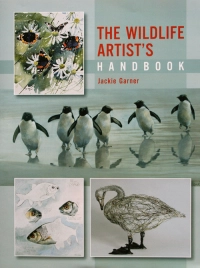
This week we’re considering the relative positions of artist, support and subject.
Where are you sitting (or standing) to sketch?
This seems a trivial question, but it’s important to choose the optimum vantage point. Why would we make sketching more difficult, by disregarding something so easy to control?

If you think the position doesn’t matter, consider this.
If I asked you to sketch something large (elephant/ steam train/ cathedral…) and then asked you to sketch something small (insect/ flower/ slice of cake….), would you choose to sit at the same distance from each one?
Of course not!
You’d choose an appropriate distance, so you can see all of your subject without having to move your gaze.
I was reminded of this during a recent life drawing class.
The poses changed, and sometimes I asked the students to concentrate on the whole figure or sometimes just a part. Yet most acted as though their chairs were fixed in place. Even when I reminded them to consider their positions, there was still reluctance to move.
Yet drawing just the hands vs the whole figure, should require different drawing positions.
What is the ideal distance from your subject?
Sit too close and you’ll have a distorted view. You can’t see all of your subject without turning your head, so that means you’ll be drawing from two different viewpoints. Not good, unless it’s a deliberate creative choice.
Sit too far away and you can’t see enough of the structure, subtleties of tone, or details.
So the ideal position is the sweet spot between far enough to see the whole of your subject, but close enough to have a good view. Obviously the exact distance depends on your the size of your subject.
“Where should I sit for portraiture”?
Excellent question. I’m so glad you asked.
Imagine you are painting a full length or three-quarter length portrait. Clearly you need to sit or stand far enough away to see the whole figure, but that means it will be harder to see the details of the features.

The answer is that you change your position as the painting progresses. The initial stage would be establishing the structure, tones and perhaps colours of the painting. You’ll likely sit several metres away.
Then you might move closer to establish the textures, make corrections and continue to refine the painting.
Finally you would move very close to enable you to see the details of the features.
This process naturally means the features will end up with the most detail, which will demand the viewers’ attention. Exactly what we want. (Viewers always concentrate on areas of contrast or detail in a painting.)
Alternatively, you could keep the painting in the original position, but regularly move yourself forward for a closer view.
What is Sight Size?
While we’re on the subject of your position in relation to your subject, and especially portraiture, we should also talk about Sight Size.
On the whole, we tend to set our support close to the artist rather than to the subject. Sight Size is different – the support is placed alongside the subject, and the artist stands further away.
The artist moves to the painting to make a stroke, then retreats to their original position to consider the next strokes or alterations. The painting is the same size as the subject, which should be copied as closely as possible.
An example of sight size work is in the excellent TV programme, The People’s Portrait, of Nicky Philipps’ painting Simon Weston for the National Portrait Gallery. You can see it on YouTube here. (The explanation of Sight Size is at 8.12). Note how she has put tape on the floor so she always returns to the same position.
When we work in sight size, we are usually standing, so we can move freely to and from our work. The artist’s viewing position needs to allow them to have a good view of both the sitter and the work together.
What else should I know about positioning?

Standing at an easel to sketch or paint has another advantage.
I know I’m much more likely to move closer to my subject, to get a better view, or step back to review my work, than if I’m sitting.
We don’t view work at the same distance as we create it. Stepping back from time to time, to see how the work looks from the normal viewing distance, is really important.
Tonal relationships look different according to the distance at which they are viewed.
We also need to choose our position, relative to the subject, so that we have an interesting view. That’s not so much about the distance from your subject, but rather the angle of view. It could mean rearranging the subject or pose, or moving yourself so the view is more interesting.
Aside from the obvious viewpoint, what would be the effect of looking at the subject from a particularly high or low viewpoint? Or from one side, or the back?
Never just take the most obvious view without giving the image some thought. The first idea may be the most interesting, but we’ll only know that after we’ve explored other views.
Something as simple as the artist’s position may seem trivial, but it’s something we should always consider when preparing to draw or paint.

